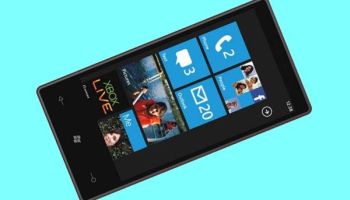Questions Remain Over Windows Phone 7 Sales

Millions of Windows Phone 7 handsets have been shipped but actual sales figures remain hard to find
Microsoft’s Windows Phone 7 has shipped 2 million units to carriers, but the number of those actually sold to consumers remains unclear.
That’s the multibillion-dollar question without an official answer. During this January’s Consumer Electronics Show in Las Vegas, a Microsoft executive told eWEEK that the company had never made a regular habit of releasing comprehensive sales numbers for Windows Mobile, the current smartphone platform’s increasingly fragmented predecessor.
That being said, Microsoft’s two biggest rivals in the consumer-smartphone space, Google and Apple, have made a habit of using sales numbers as competitive bludgeons.
Sales Figures
“[Google CEO] Eric Schmidt pointed out that they’re activating 200,000 units per day,” Apple CEO Steve Jobs told media and analysts during an 20 October earnings call. “By comparison, Apple has activated 270,000 units per day, on average.” Since then, the two companies’ other executives have used similar metrics – always in the hundreds-of-thousands range – to paint their respective smartphone platforms as unbeatable in the marketplace.
That intense focus on sales numbers, in turn, pressures Microsoft to show whether Windows Phone 7 is a hit with consumers – not to mention capable of justifying the hundreds of millions of dollars doubtlessly spent on development and marketing.
 Yet in the three months following the smartphones’ rollout in the US market, Microsoft has released just two sales metrics: In December, the company told journalists some 1.5 million Windows Phone 7 units had been sold by manufacturers to retailers; by 26 January, that number had risen to 2 million, as Bloomberg News confirmed with Microsoft.
Yet in the three months following the smartphones’ rollout in the US market, Microsoft has released just two sales metrics: In December, the company told journalists some 1.5 million Windows Phone 7 units had been sold by manufacturers to retailers; by 26 January, that number had risen to 2 million, as Bloomberg News confirmed with Microsoft.
When asked about the possibility of poor consumer-sales numbers, Microsoft points to research data suggesting some 93 percent of Windows Phone owners are either “satisfied” or “very satisfied” with the device.
An executive from one of Microsoft’s smartphone partners, LG Electronics, told the blog Pocket-lint in a 14 January interview that Windows Phone 7’s launch was “less than we expected.”
Talk To The Carriers
James Choi, a marketing strategy and planning team director for the manufacturer, said in the posting: “We strongly feel that it has a strong potential even though the first push wasn’t what everyone expected.” He offered no hard sales data, however. LG Electronics is one of the companies building the initial line of Windows Phone 7 devices, a roster that also includes Samsung, Dell and HTC.
A November report by TheStreet.com suggested some 40,000 Windows Phone 7 devices had sold 8 November, the platform’s first day of US release on T-Mobile and AT&T. Microsoft did not confirm that number with eWEEK, referring the question to the carriers.
If you take Microsoft’s 2 million units figure and divide by the 79 days since that 8 November release, you arrive at an average of 25,316 units per day sold by manufacturers to carriers. If half of those eventually sold to consumers, it means Windows Phone 7 has sold a shade under a million units to consumers. If a third sold, that means around 666,666 units total.
Back in 2007, it took Apple’s first generation some 74 days to sell 1 million units. The Motorola Droid managed to sell 1.05 million in the 74 days following its November 2009 release.
“Our numbers are similar to the performance of other first-generation mobile platforms,” Achim Berg, Microsoft’s vice president of business and marketing for Windows Phones, mentioned in a Q&A posted 21 December on the company’s corporate website. “It takes time to educate partners and consumers on what you’re delivering, and drive awareness and interest in your new offering. We’re comfortable with where we are, and we are here for the long run.”
Other Issues
Meanwhile, a Facebook page for the Windows Phone application has 366,099 monthly active users.
Microsoft has also been putting out small Windows Phone 7-related fires over the past few weeks. In addition to reaching out to developers on the verge of “jailbreaking” the platform, the company also launched an investigation into a mysterious “data drain” affecting an unknown percentage of smartphones.
In the latter case, Redmond claimed 20 January that the culprit was an application created by an unnamed third party, which was apparently sending relatively significant amounts of data per day – sometimes between 30MB and 50MB within a 24-hour period.